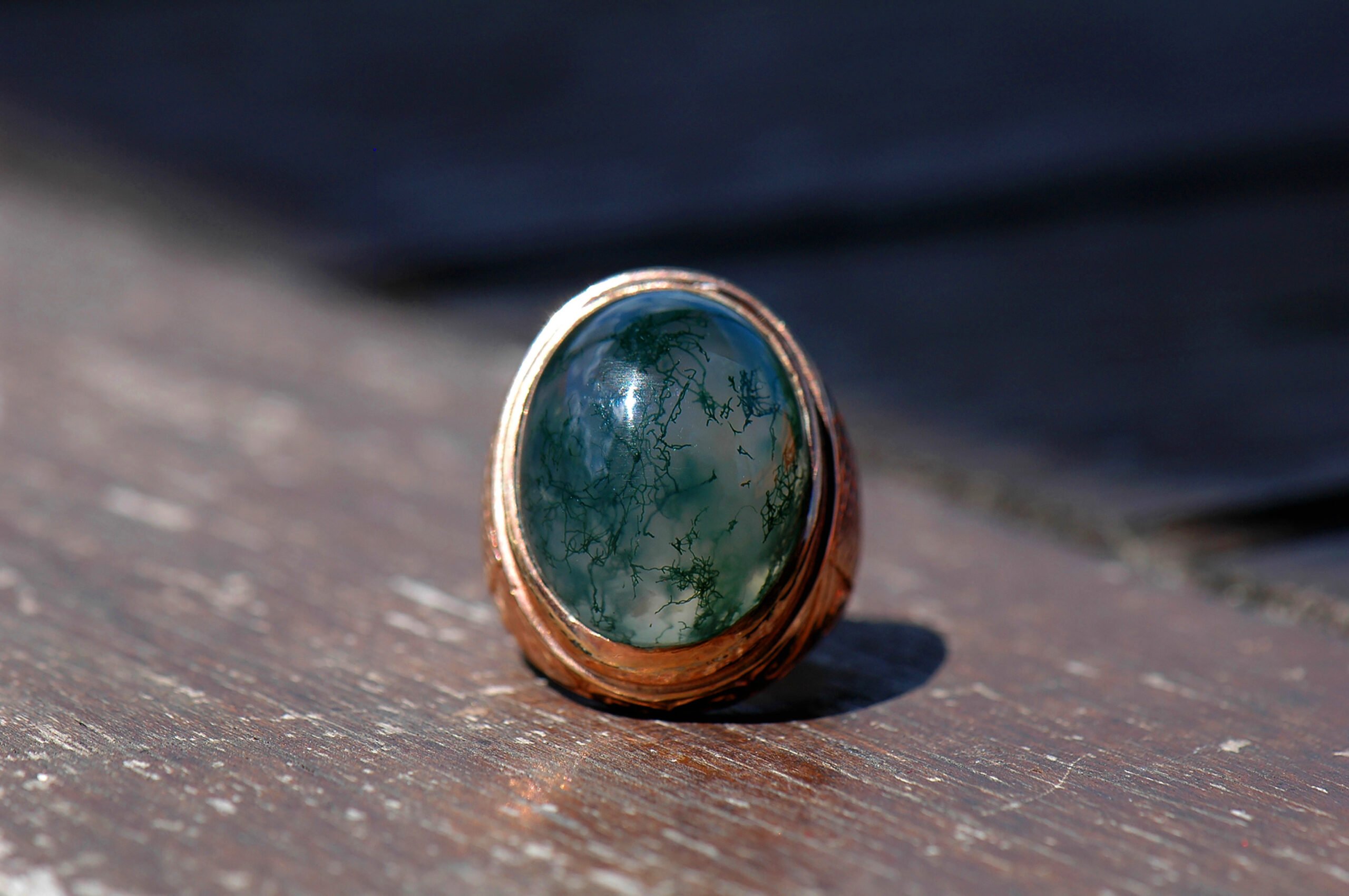Is Moss Agate Expensive?
4 Minute Read
In recent years, the gemstone market has observed an ever-growing trend towards stones with unique appearances. Some say this is a reaction to the perfection of synthetic diamonds that have flooded the market over the last six years. Whatever the reason, demand for moss agate, a type of chalcedony which is a cryptocrystalline quartz, has skyrocketed. Fortunately, despite the significant increase in demand, moss agate remains very affordable. This means that shoppers working with a tight budget are in luck! It is not uncommon to see large gems of the finest quality priced at just a few hundred dollars per carat. There are quite a few options priced under fifty dollars.
This colorless, translucent gemstone features delicate green veining, sometimes with brown and/or red inclusions, in patterns that never repeat and can't be replicated in a laboratory.
Interestingly, one of the sectors which has seen a marked increase in the popularity of moss agate is the bridal niche where shoppers are seeking out engagement stones that are as unique and beautiful as their relationship. A popular trend is to add diamond accent stones, resulting in settings that are worth more than the primary gem. Yet, it is clear that the moss agate is the element being celebrated. This willingness to pair the humble moss agate with precious gemstones illustrates what a good buy the gem really is.
The Most Important Value Characteristic for Moss Agate is Its Green Veining
One word that you will come across when researching moss agate is the term "dendritic". Borrowing from its original Greek meaning, gemologists use this word to describe inclusions that have a similar shape as natural tree branches, the fronds of ferns, or (you guessed it!) moss. The beautiful green dendritic patterns that are suspended in a milky fog are what makes moss agate entirely unique.
at CustomMade
Because no two moss agates look alike, it is difficult to define what "good" dendritic veining looks like. Further complicating the issue is that different people are drawn to different patterns. Some value symmetry while others enjoy a more random design. You will find gems with minimal veining while other stones are filled with dynamically interwoven green vines. What is agreed upon is that veining must be present, otherwise the gem is just a fuzzy, whitish rock.
In terms of value, gems with a light to medium amount of veining fetch the highest per-carat values. Gems with too little veining are plain while some stones are saturated with so many inclusions that they are almost a solid, dark green color with scattered translucent patches.
Dark Inclusions Add Interest
The inclusions that create the green veins are "chlorite" and "green hornblende". If these inclusions are exposed to air, they will oxidize and take on a dark red or brown color.
The most valuable moss agate tends to just have green, but, again, it is the preference of the purchaser that matters here. Some people like the addition of red and brown because it gives the effect of an abstract landscape with the milky background appearing as fog, the green veins as vegetation, and brown and red inclusions representing soil. Some call such gems "scenic agate".
Good Transparency Is a Must
The appeal of moss agate is the ability to look inside the gem and admire the three-dimensional dendritic veining. Accordingly, gems that are highly transparent have greater value. Fortunately, moss agate tends to have a semitransparent or translucent transparency. If a gem is especially cloudy, or even opaque, that will drive the value down.
Most Gems Are Modestly Sized
When searching for moss agate, you will quickly find that most crystals, regardless of quality, are under two carats. If you do find a gem larger than that with high transparency and attractive veining, you can expect to pay a premium.
Shape Is Meant to Highlight Veining
Moss agate is often cut to show off its veining. This means that you will see lots of unconventional shapes with minimal faceting. Simple rounded circular or oval cabochons are always popular, as are pear cuts. Shield outlines are also in demand. Many designers create mountings that are inspired by the shape of the free-floating green veins of the specific gem they are setting. As such, you will find plenty of unconventional jewelry designs that set the gem at an angle or feature unique decorative elements.
Origin Does Not Directly Affect Value
Compared with other gemstones, moss agate is found in relatively few places worldwide. Many gems originate in the US with deposits existing in multiple states including California, Colorado, Montana, and Wyoming. There are a few other mines in places like Canada and the UK. India, specifically, has gained a reputation as a reliable source of fine moss agate. However, the origin of individual moss agate gems is generally not recorded. This is because of the overlap in the appearance of gems from each site. When all is said and done, it is the appearance of moss agate that determines its' value, not its origin.
Emily Frontiere
Emily Frontiere is a GIA Graduate Gemologist. She is particularly experienced working with estate/antique jewelry.
Related Articles
Gem and Jewelry Insurance Quotes: Four Money-Saving Questions
Appraising Rubies
Jewelers Pricing Survey
Gemstone Buying for Profit: Budget and Basis
Latest Articles
800 Years of Mogok: A Celebration in Tenuous Times
What is the Average Gemstone Faceting Yield?
Pyroxmangite Value, Price, and Jewelry Information
How to Identify Emerald Simulants and Synthetics
Never Stop Learning
When you join the IGS community, you get trusted diamond & gemstone information when you need it.
Get Gemology Insights
Get started with the International Gem Society’s free guide to gemstone identification. Join our weekly newsletter & get a free copy of the Gem ID Checklist!
